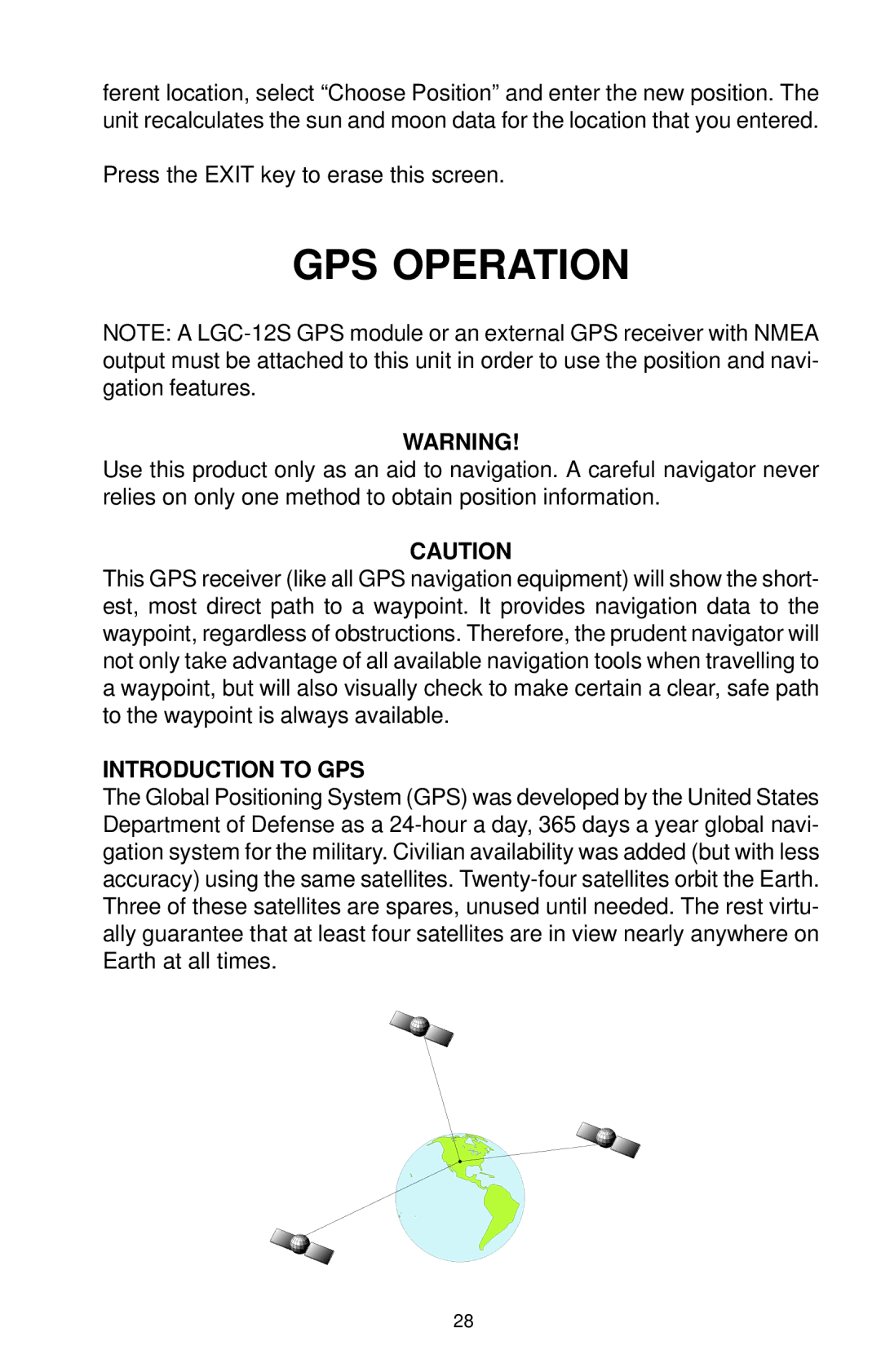
ferent location, select “Choose Position” and enter the new position. The unit recalculates the sun and moon data for the location that you entered.
Press the EXIT key to erase this screen.
GPS OPERATION
NOTE: A
WARNING!
Use this product only as an aid to navigation. A careful navigator never relies on only one method to obtain position information.
CAUTION
This GPS receiver (like all GPS navigation equipment) will show the short- est, most direct path to a waypoint. It provides navigation data to the waypoint, regardless of obstructions. Therefore, the prudent navigator will not only take advantage of all available navigation tools when travelling to a waypoint, but will also visually check to make certain a clear, safe path to the waypoint is always available.
INTRODUCTION TO GPS
The Global Positioning System (GPS) was developed by the United States Department of Defense as a
28
